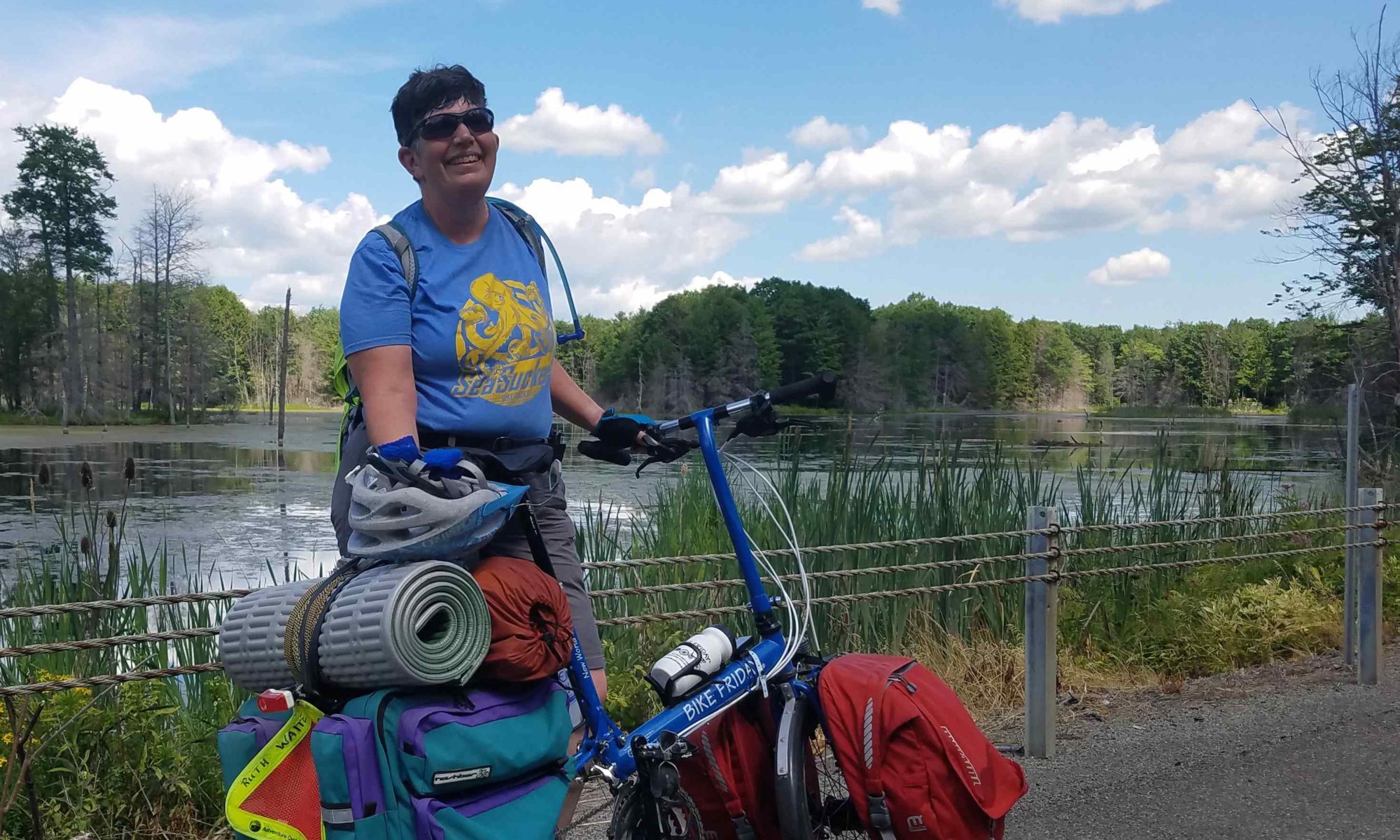July 27.
Going from Selma to Tuskegee was another very hot and long day. We started out with a ride over the Edmund Pettus Bridge and followed the historic way of the march to Montgomery for part of the way. We learned from Diane Harris the night before that once a court order was given allowing the march and federal protection was brought in, that she was allowed to go on the march to Montgomery. Not everyone marched, she told us. Someone had chartered busses, and she and many others actually rode busses each day while others marched. I don’t know if they took turns or how they did that because there were definitely some people marching along the way from Selma to Montgomery.
I learned this later, but the Fullers were also a part of the civil rights movement. They were living in Montgomery at the time of the bus boycott and later at the time of the march in Selma. Millard and his law partner, Morris Dees, had seen some of the beatings taking place and were horrified and knew they had to choose a side to stand on. Morris Dees, of course, later founded the Southern Poverty Law Center. Linda talked about how they were asked to provide housing for people on the march to Montgomery. Some of the people who had come from the north would sleep in their house and then get a ride each day to wherever the march had ended the day before. She didn’t say much about it; it was clearly not a good memory. She did say that they were threatened because of it.
Just inside Montgomery we had a rest stop at the Selma Road Park. When we pulled in (I was riding in the van at the time) we were greeted by a black man, Rufus Ellis, who assumed that we had gotten lost! Apparently, vans and trailers with white people in them don’t show up too often. There was a shelter there and we weren’t sure if we should use it since they were already sitting out there, but they said it was fine, and several people helped us set up. There was a community center there, also, with a children’s day camp program of some sort. This turned out to be a highlight of the trip because we got to play with a bunch of children in the park.

Henry played basketball with some of the boys and ran races with them. Grace and Becky played with the girls and showed them how to use the camera, and some of the boys wanted to learn to take pictures, also. Grace teaches at a farm where children come for three days. She truly loves children, and loves seeing them learn something and then teach it to their peers.


Mr. Ellis was a minor league baseball player, a pitcher, and you can find info about him using Google—the universal encyclopedia. He was surprised to learn that some of our riders were in their seventies, about the same age as his mom. So he even called up his mom and had Lou Cooper, one of our riders, talk to her. Lou gets along with everyone and loves to meet new people so they had a good visit. I think I wrote already about how Mr. Ellis told us how his mom picked 200 pounds of cotton on a Friday before giving birth to his brother on Sunday. He was amazed at what we were doing, but it made him really proud of what his mom had done, also. I suppose he had always been impressed by that, but it seemed to come home to him in a new way.

At Tuskegee, we stayed in the Tuskegee Institute Middle School. We had a police escort from the Institute into town where we heard from the mayor pro tem and the head of the chamber of commerce. They also wanted to learn about the work of the Fuller Center. It only takes five people to start a Fuller Center Covenant Partner. This was the first time Henry mentioned that in one of his presentations. Another good day!

























